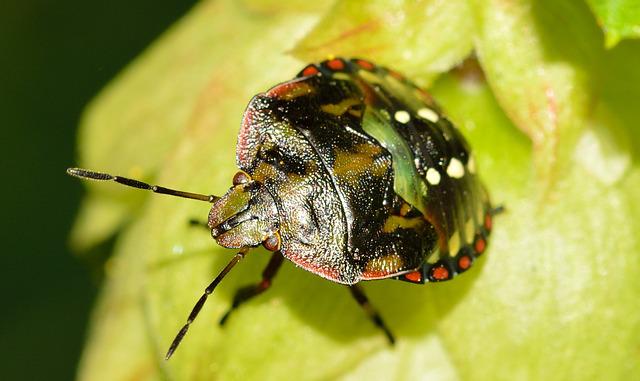
So, Where To Sleep If You Have Bed Bugs?
No matter what you do, bed bugs appear to bite you while you sleep. However, you may prevent them from biting and spend the night in your bed by utilizing a number of efficient anti-bed bug solutions. So, where to sleep if you have bed bugs?
Table of Contents
Bed Bugs Description
Bed bugs, or Cimex lectularius, are tiny brown insects with flat, oval-shaped bodies. They can be seen with the naked eye despite being very small. Generally speaking, they are pests that feed on people, or more specifically, their blood, leaving behind itchy bites and other bothersome signs of their presence.
It’s important to note that there are a number of insects that share this same basic appearance— so it is crucial to know whether you’re identifying bed bugs correctly, or if you’re dealing with a different bug entirely.
Additionally, it’s critical to keep an eye out for bed bug eggs and nymphs, the young stages of the insect. A bed bug egg is roughly the size of a pinhead and is white in color. In contrast, a bed bug nymph is more translucent and can grow to different sizes as it gets older.
Read about: Choice Hotel Gift Card: Frequnently Answered Questions – Global Travel Idea
Even though bed bugs are typically regarded as a “year-round” pest, which means that infestations can happen at any time of the year, they do tend to be more active in the summer. When the weather is nice, more people like to travel, but so do pests. You might unintentionally be carrying some unwanted hitchhikers on your clothing, luggage, or other possessions if you stay or visit a location where bed bugs are present.
Fortunately, you can take precautions to avoid bringing bed bugs back with you from your travels; more on that later.
How Do Bed Bugs Affect Sleep?
Bed bugs are regarded as a public health problem, as I previously stated. Despite not being known to spread diseases, these pests can still have detrimental effects on a person’s health and wellbeing, including how well they sleep at night.
The most noticeable effect might be their bites; while minor bite marks are typical, some people might not react at all. More concerningly, bed bug bites can result in infections from the body’s immune system reacting to the bite as well as potentially serious allergic reactions in some people.
As well as physical reactions, infestations can have an impact on our mental health. Following an infestation, anxiety and insomnia can occur, along with undesirable behaviors like hypervigilance in an effort to keep the bugs away.
According to a study about the psychological effects of bed bug attacks, the emotional trauma following an infestation can even suggest posttraumatic stress disorder (Further studies are required to determine the extent to which PTSD can follow an infestation.
However, there is one thing you can be certain of: bed bugs are bad for your sleep and your mental health.
How To Know If You Have Bedbugs?
There are primarily two indications of a bedbug infestation. One is bites that resemble insects on your arms or legs. Bedbugs typically conceal themselves in the seams and crevices of mattresses because they prefer warm environments. They prey on humans and animals while you sleep because they are nocturnal and feed on blood. Another indicator are the tiny black dots on your sheets. This is bedbug feces. When you try to remove it, it won’t flake off but will leave a black smear instead. Having said that, the only reliable way to determine if you have bedbugs is to actually see them.
Infestation Signs
If you go to sleep with no itchy spots and wake up with them, you may have bedbugs, especially if you recently purchased a used bed or other used furniture. Other signs that you have bedbugs include:
Blood stains on your sheets or pillowcases
Dark or rusty spots of bedbug excrement on sheets and mattresses, bed clothes, and walls
Bedbug fecal spots, egg shells, or shed skins in areas where bedbugs hide
An offensive, musty odor from the bugs’ scent glands
Remove all bedding from the room if you think there might be an infestation and carefully inspect it for bugs or their waste. Examine the seams in the wood framing by taking off the dust cover covering the bottom of the box springs. The area of the fabric that is stapled to the wooden frame should be peeled back.
Additionally, look inside books, phones, radios, the carpet’s edge, and even electrical outlets in the vicinity of the bed. Examine your closet because bedbugs can attach to clothing. Call an exterminator if you are unsure of bedbug symptoms because they will know what to look for.
Start taking action to eliminate the bugs and stop their re-infestation if you notice infestation signs.
How Do Bed Bugs Disappear?
Early detection of an infestation is crucial to getting rid of bedbugs. Bedbugs hide in small spaces, such as behind and between baseboards, in wallpaper, and in peeling paint. Some people advise using bedbug-killing mattress covers, but those chemicals will come into contact with your skin while you sleep. The use of a pesticide-filled fogging bomb is an additional remedy. These might eliminate some bedbugs, but not all of them. “Structural fumigation” is the only effective method for truly getting rid of an infestation. This procedure is pricy, invasive, and time-consuming; your home must be evacuated before being completely covered in tarp and gassed with a pesticide, which can take several days and is occasionally simply not feasible.

Bed Bug Treatments
Cleaning up the areas where bedbugs reside is the first step in getting rid of bedbugs. This should include the following:
Clean your curtains, bedding, linens, and clothing in hot water, then dry them on the highest dryer setting. Stuffed animals, shoes, and other items that can’t be washed should be placed in the dryer and run on high for 30 minutes.
Before vacuuming, use a stiff brush to scrub mattress seams to get rid of bedbugs and their eggs.
Your bed and the area around it should be frequently vacuumed. Immediately after vacuuming, put the vacuum cleaner bag in a plastic bag and dispose of it outside in a trash can.
To prevent bedbugs from entering or escaping, cover the mattress and box springs with a tightly woven, zippered cover. In order to ensure that all bedbugs in the mattress are dead, keep the cover on your mattress for at least a year. Bedbugs can survive for up to a year without feeding.
Read about: What Hotels Can You Book At 18? Tips To Book Hotels – Global Travel Idea
To remove hiding places for bedbugs, patch up plaster cracks and tack down peeling wallpaper.
Clean up the area around the bed.
If your mattress is infested, you might want to replace it with a new one. Just be sure to get rid of the bedbugs in the rest of your house first, or they’ll spread to your new mattress.
After A Bed Bug Heat Treatment, Is It Safe To Sleep In Bed?
In this regard, heat treatment outperforms pesticides. A house only needs to be heated once. If done properly, it eliminates both bed bugs and their eggs.
After heat treatment, there will be no bed bugs or eggs in your bed. You might need to remove some dead ones. However, nothing in there will nip at you.
After receiving heat treatment, there are no problems with going to bed in your own bed. Additionally, there shouldn’t be any bed bugs in the furniture nearby. As a result, if the heat treatment was done correctly, you won’t ever be bitten while you’re trying to sleep at night.
Conclusion
To completely eliminate bedbugs, trained and licensed personnel are required to understand the biology and behavior of bedbugs and the correct use of pesticides. There is little possibility that you can solve the problem yourself. Most insecticides on the market are not designed for bedbugs. Using these products (although they can kill some bedbugs) may only spread bedbugs to remote areas, making the problem more difficult to solve. Although chemotherapy can only be handled by professionals, you can take many non chemical measures to help eliminate problems and accelerate the results of your bedbug program.
To get rid of any parasites hiding in the headboard, box springs, or under the mattress, use a strong bed bug spray. On touch, bed bugs will perish from this. Afterward, apply a mattress encasement to keep bed bugs contained within, out of your reach. You may prevent bed bugs from getting near you by putting traps at the feet of your bed.


